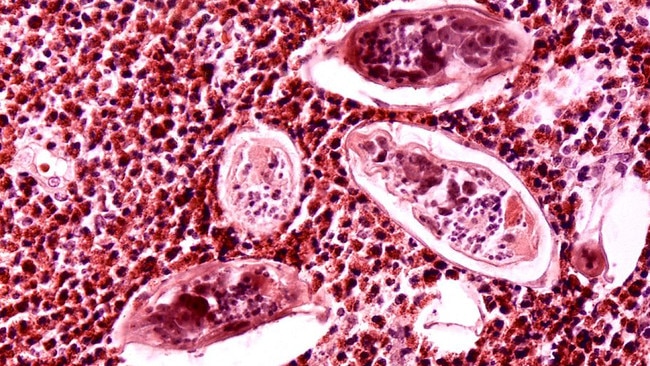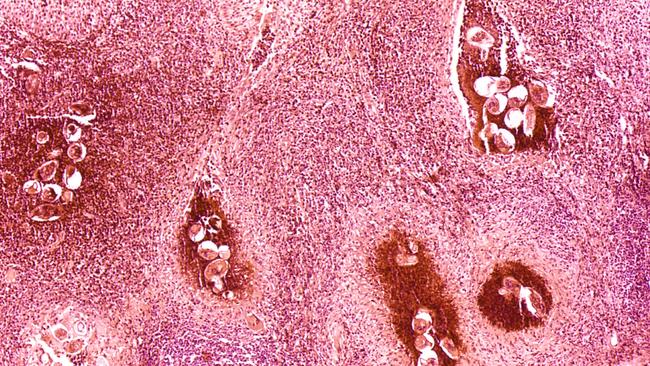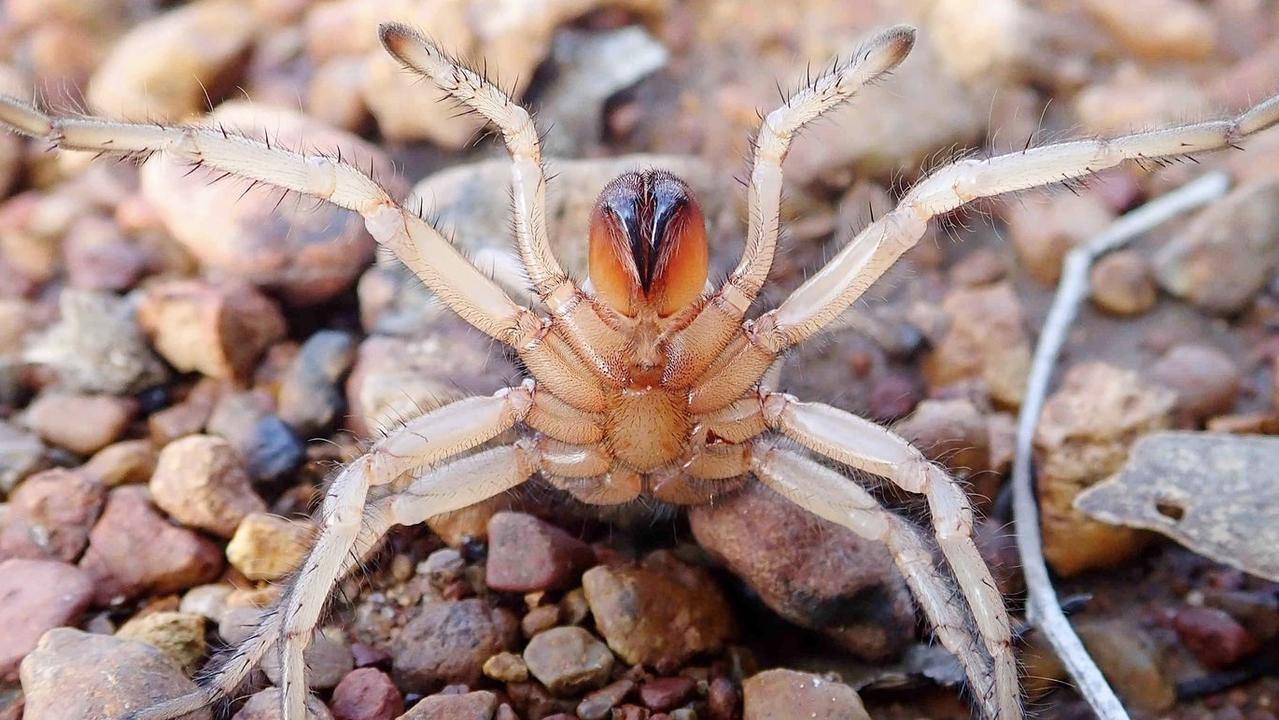‘Rampant’ parasite has infected 110 million, triggers some cancers
Experts have warned that a tiny parasite can wreak havoc long after it’s gone, with a new study highlighting an alarming trend.

Health
Don't miss out on the headlines from Health. Followed categories will be added to My News.
A tiny parasite may be wreaking havoc below the belt — even long after it’s gone.
A new study found that an “often-overlooked” parasitic infection, already linked to bladder cancer, could also trigger cancer-related gene activity in the cervical lining.
Even more troubling, the genetic changes appear to intensify after treatment, a red flag that researchers say suggests patients may need closer monitoring even after their infection has cleared.
Schistosomiasis is a parasitic disease that runs rampant in tropical and subtropical areas where clean water and proper sanitation are in short supply, according to the World Health Organisation, the New York Post reported.
The infection usually kicks off when microscopic larvae — courtesy of freshwater snails — burrow into your skin during a dip in contaminated water.

One particularly nasty strain, S. haematobium, infects over 110 million people around the world. One inside the body, the larvae grow into adult worms that lay eggs in the urinary and reproductive tracts.
Those eggs set off chronic inflammation, damaging tissue and causing cellular changes that can sometimes lead to bladder cancer. But their impact on the cervix has largely been a mystery — until now.

Cervix under siege
In a new study, researchers analysed cervical tissue samples from 39 Tanzanian women, some infected with S. haematobium and others not.
The infected women were treated with praziquantel, a drug that kills the adult worms, and samples were taken before and 4 to 12 months after treatment.
By studying the gene activity in these samples, the team identified nine genes that behaved differently in the infected and uninfected women.
“The findings suggest that infection may trigger molecular changes that make women more vulnerable to cancer-related processes in the cervix,” said Dr. Anna Maria Mertelsmann, a researcher at University Hospital Zurich and Weill Cornell Medicine, who led the study.
She recommended that women diagnosed with S. haematobium be closed monitored for early signs of cervical tissue abnormalities that could lead to cancer.

Cured — but not in the clear
Notably, in women whose infections cleared after treatment, researchers identified 23 genes that changed, while 29 genes differed between those who were treated and those who had never been infected.
“Our research shows that women who received praziquantel treatment exhibited more genetic changes linked to cancer than those with an active infection,” Mertelsmann said.
“This raises critical questions about the long-term effects of treatment and highlights the need for careful post-treatment monitoring,” she continued.

While praziquantel is the first-line treatment for S. haematobium infections, Mertelsmann suggested that additional therapies, such as anti-inflammatory or immune-modulating treatments, could help counteract the harmful effects seen after taking the drug.
The research is just the beginning of uncovering how S. haematobium could play a role in cervical cancer. A larger study tracking 180 women over 12 months is already underway to confirm the findings.
How to protect yourself from S. haematobium
While the parasitic worm isn’t typically found in Australia, it’s common in parts of Africa and the Middle East. If you’re travelling to areas where the disease is prevalent, there are some simple steps you can take to protect yourself, according to the CDC.
This story originally appeared on the New York Post and was republished with permission.
Originally published as ‘Rampant’ parasite has infected 110 million, triggers some cancers




